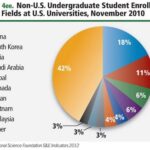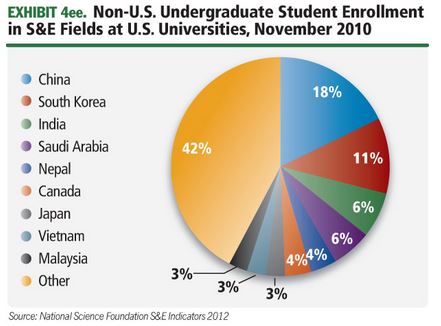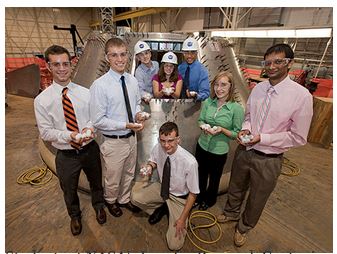Education
Post-secondary STEM Education
JSEP Program Inspires High School Students to Find Their Place in Space


Just as the space industry is thriving and creating a bevy of new jobs, falling STEM (science, technology, engineering, and mathematics) proficiencies and dwindling STEM-career interest among U.S. students threaten to exclude today’s young people from realizing opportunities in today’s space ecosystem . . .
Workforce: Workforce and Education – TSR 2014
2013 – Post Secondary STEM Education Demographics


In the United States, the number of STEM graduates has been growing at all degree attainment levels. Bachelor’s degrees grew 26% from 2000 to 2010, while master’s and doctoral degrees each grew about 40% over this time period. Data is available on STEM degree attainment in the United States going back to 1966, three years before the Apollo 11 flight that landed on the Moon.going back to 1966, three years before the Apollo 11 flight that landed on the Moon.
2012 – Demographics


Universities in the United States attract a large number of foreign students. The largest proportion of these students comes from China, followed by South Korea and India. Retaining these highly trained graduates is important, particularly at a time when global competition for this talent is increasing. . .
2011 – Demographics – Snapshot
Both the government and industry space sectors in the United States show a high demand for STEM-educated professionals. As of December 2011, ## of NASA’s ## employees—##% of its civil servant workforce—worked in STEM-related fields, mainly as professionals working in engineering, mathematics, biological and physical sciences, or medicine.
2010 – Space Industry Demographics – Snapshot


In the United States, NASA continues to be a significant source of demand for new space professionals. Over the past five years, NASA has hired more than . . .
2010 – U.S. Education Trends – Snapshot
Considered together, recent NASA and U.S. aerospace company hiring statistics indicate that there is a combined demand for thousands of new S&E workers each year in the United States, a growing proportion of whom are aged 35 or less. These new hires will most likely need at least a bachelor’s degree, and many will require either a master’s or doctoral degree.
2008 – Demographics
Women constituted a majority of students who received post-secondary degrees. In 2006, some 58% of all bachelor’s degrees were awarded to women, up from 51% in 1986. In degree fields critical to the space industry, however, women are still woefully underrepresented.
2008 – Post-secondary STEM Education
New manpower, especially the recruitment of talented college graduates with degrees in such fields as astronomy; aeronautical and astronautical engineering; atmospheric, Earth, and space sciences; and mathematics, will be key to ensuring the health and vitality of the country’s space industry. What follows is an overview of a few major trends in postsecondary science and engineering education.